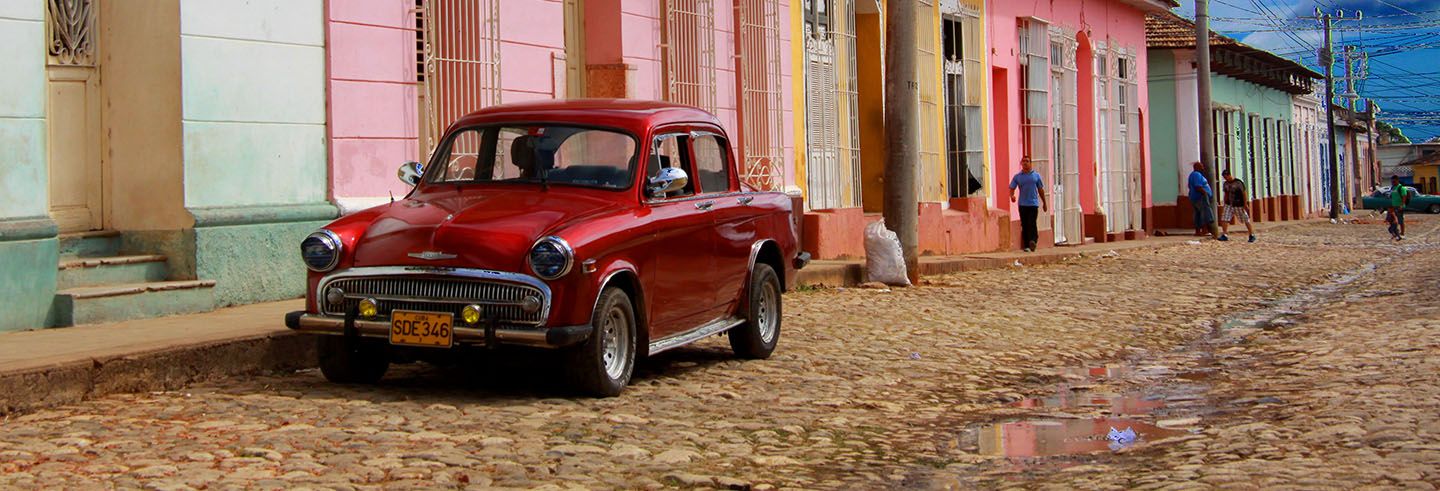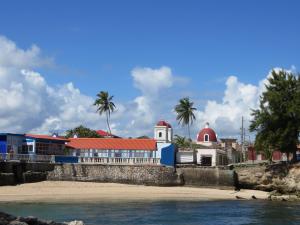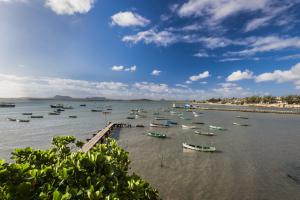

Gibara, Cuba
Explore the old walled city of Gibara in Holguín province, an old colonial treasure in Cuba
Gibara, located 33 km from the capital of Holguín, is a city that played a significant role in the history of the island of Cuba and at the moment, although without that certain importance of yesteryear, it is an outstanding place for you to visit and get a closer look at all its secrets.
The municipality, adjoining the province of Las Tunas in the west portrays a rural character, although that does not hinder one of the most magnificent urban centres in the country thanks to buildings like the Iglesia de San Fulgencio (San Fulgencio Church) and other surrounding buildings of Plaza Calixto García (Calixto García Square).
Gibara emphasises its lovely beaches and the leafy vegetation surrounding it, which turns them into heavenly atmospheres. It is believed that one of them was the first place where the men captained by Christopher Columbus docked their vessels and interacted with native people. Another theory not confirmed unanimously is its name although many people believe it comes from a native word jiba, that designates a type of leafy vegetation in the area. Another known name for the locality is La Villa Blanca (White Town) because of the constructions of this colour that were placed in the area after the foundation of the city.
This event occurred in 1817 with the positioning of the first stone of the Batería de Fernando VII (Battery of Ferdinand VII), a system of fortifications created to slow down the pirate and corsair attacks at Gibara Bay. The city turns into the second walled one in the country and its port security gives reason to believe that this is the most important one in the whole island. This is undoubtedly the most impressive era in the area and the booming trade turns this city into a true colonial treasure where many redoubts still remain.
This place has also been a stage for many political events in relevance to the history of the country that had many very significant figures in the Cuban fight. Máximo Gómez, Antonio Maceo and Calixto García led important moves for the independence wars as well as during the Revolución and the Gibara men actively participated in against the regime of Batista.
In 1958, the railway that gave life to the area’s sugar industry made its last trip and the city lost a big part of its richness. Also, in 2008, the city suffered from the hurricane Ike’s consequences that left the place totally ruined. Nowadays it has recovered part of the splendour, not an easy task, that has always emphasised the place and it is the ideal place where the Cuban culture and their people meet.
The happy Cuban character can be seen at some local parties, such as the Fiestas de San Fulgencio (San Fulgencio Festival) and the Fiesta del Gibareño Ausente. Also, every year in April since 2002 the Festival del Cine Pobre takes place, which is an initiative of a deceased director Humberto Solás, who brings many significant figures together from all over the world in Gibara.
Interactive map:
Holguín
City of Holguín
What to see:
- Holguín Cathedral
- Parque Peralta
- Parque Calixto García
- Biblioteca Álex Urquiola
- Parque Céspedes
- Iglesia de San José
- Plaza de la Marqueta
- Plaza de la Revolución Calixto García
- La Loma de la Cruz
- Fábrica de Órganos
- Mirador de Mayabe
Museums:
Gíbara
What to see:
Museums:
- Museo de Historia Natural
- Museo de Historia Municipal
- Museo de Artes Decorativas
- Galería Cosme Proenza
Beaches:
Banes
What to see:
- Guardalavaca
- Parque Natural Cristóbal Colón
- Sitio Histórico de Birán
- Acuario de Cayo Naranjo
- Bioparque Rocazul
- Parque Nacional Monumento Bariay
- Iglesia de Nuestra Señora de la Caridad
- Locomotora a vapor 964
Museums:
Beaches:
Other nearby destinations:
Why "Cuban Travel Agency"?
"Cuban Travel Agency" is part of the Visitar Cuba project, an organization of Cuban agencies whose objectives are:
- ✓ Disseminate Cuba, its culture and its heritage.
- ✓ Promote sustainable tourism.
- ✓ Support the local economy, prioritizing direct contact with Cuban agencies.
- ✓ Offer budgets without commitment and without cost, from the hand of Cuban experts.
Travel agencies and Tour Operators
If you are an agency or tour operator and you are looking for help to create trips to Cuba, trust our expert hands, we offer special prices.
© www.CubanTravelAgency.Org - All rights reserved.




